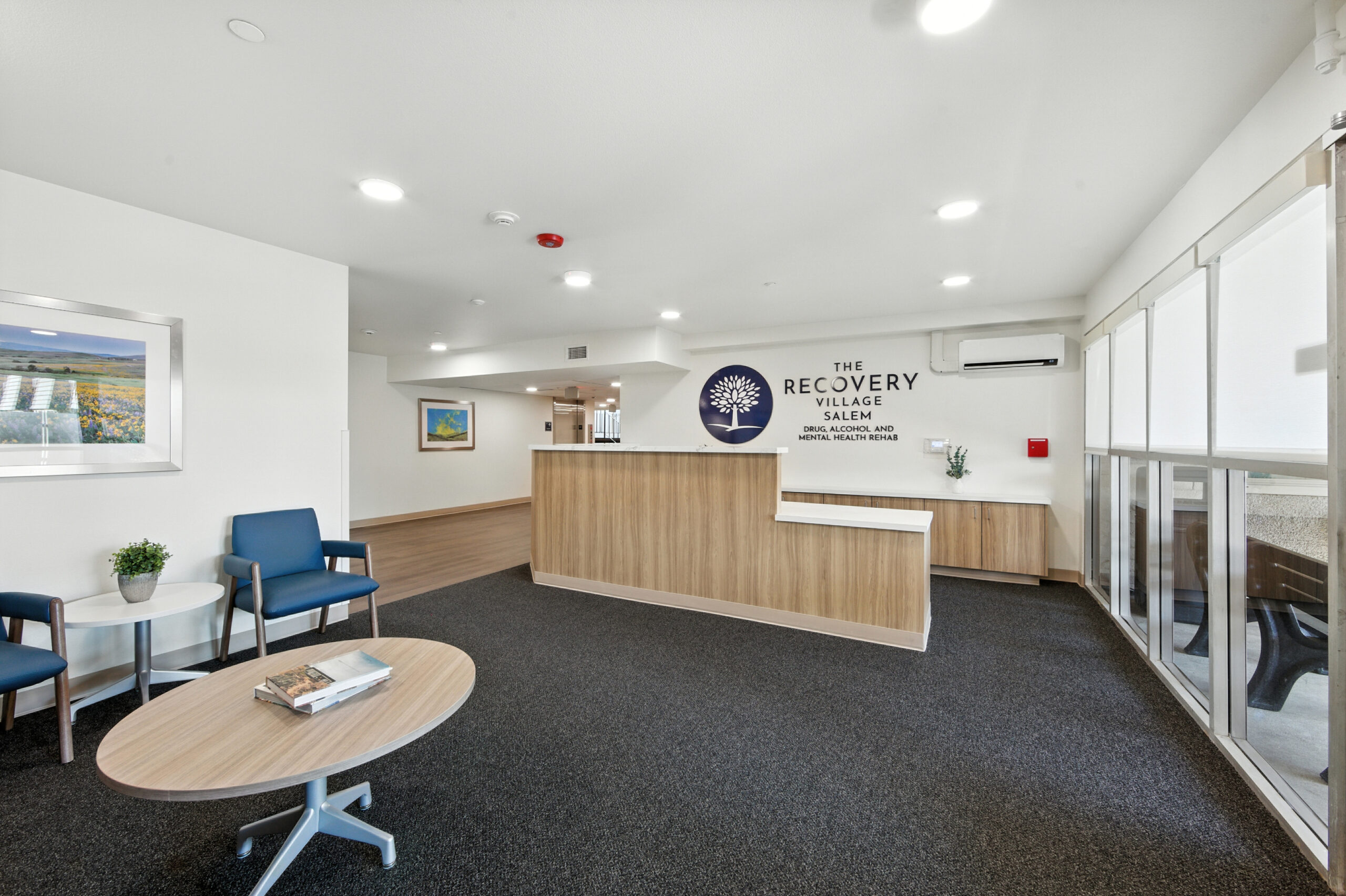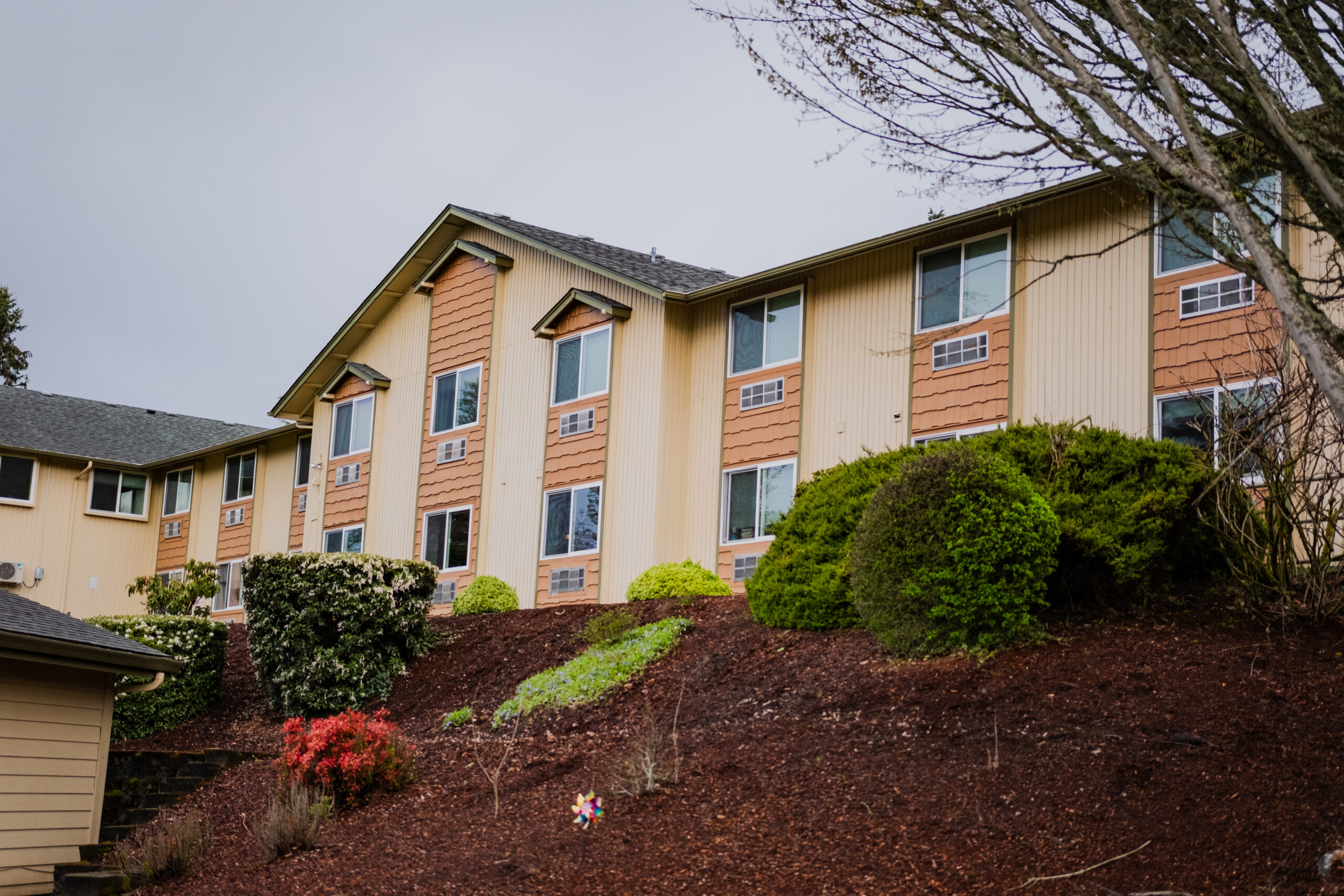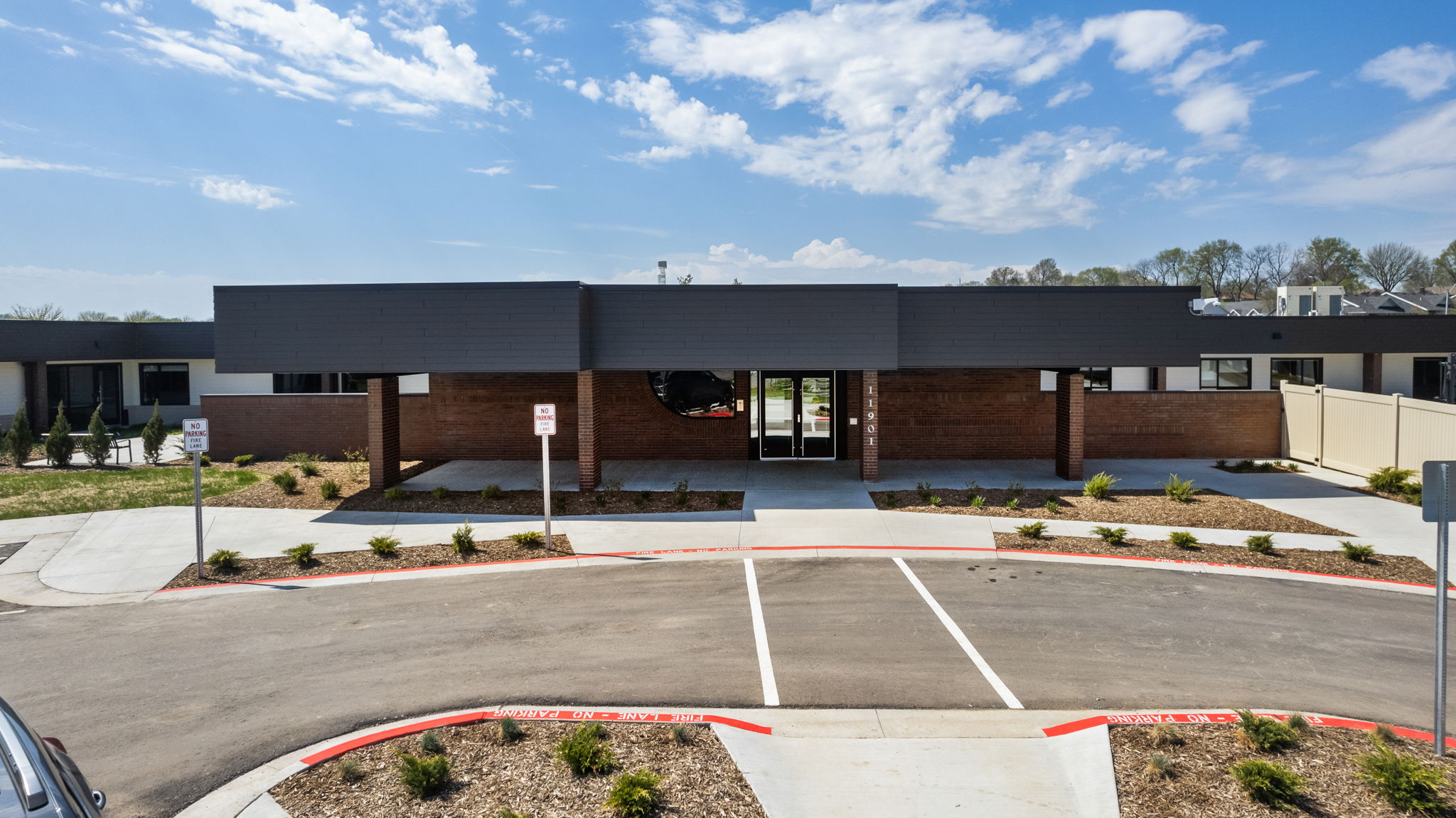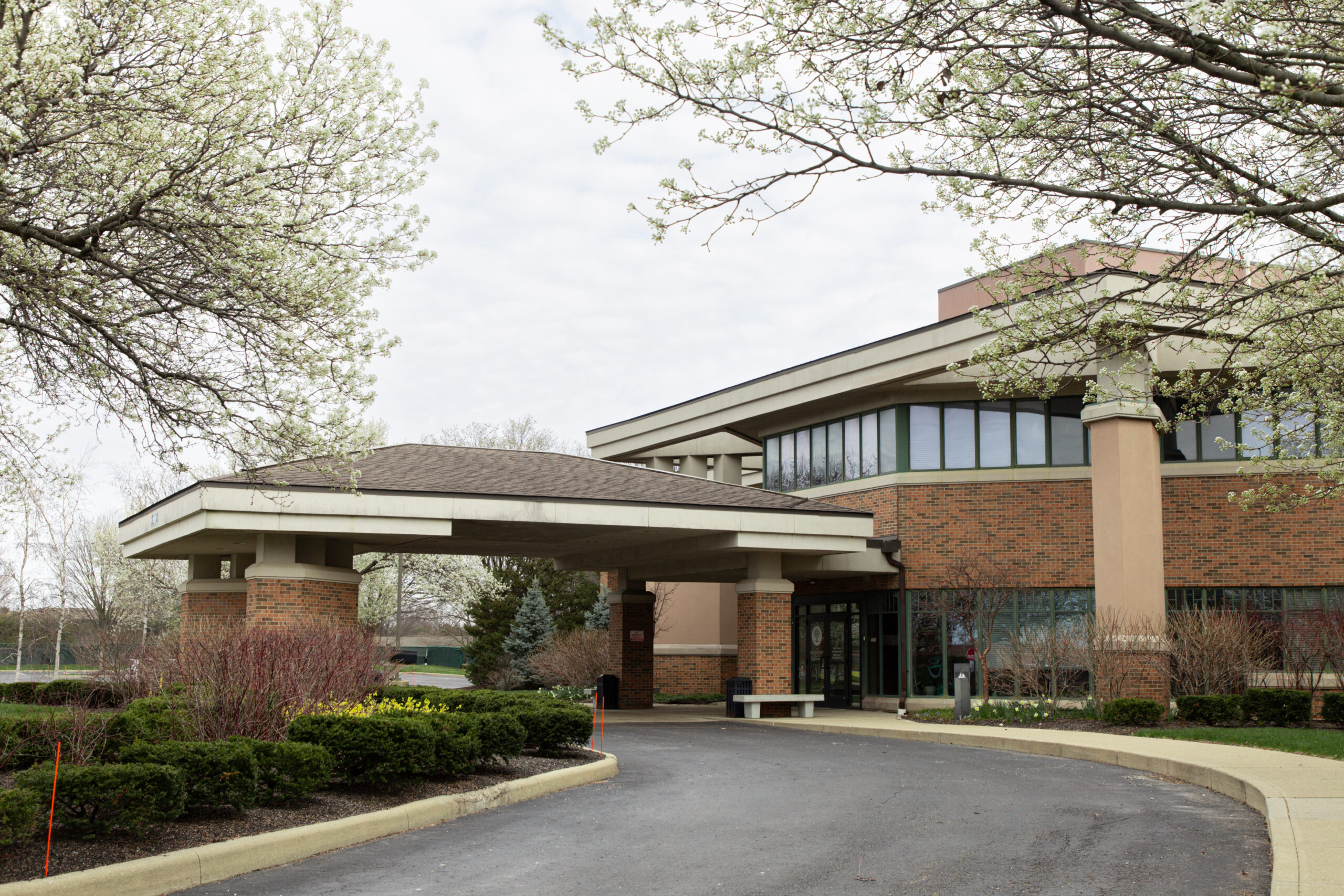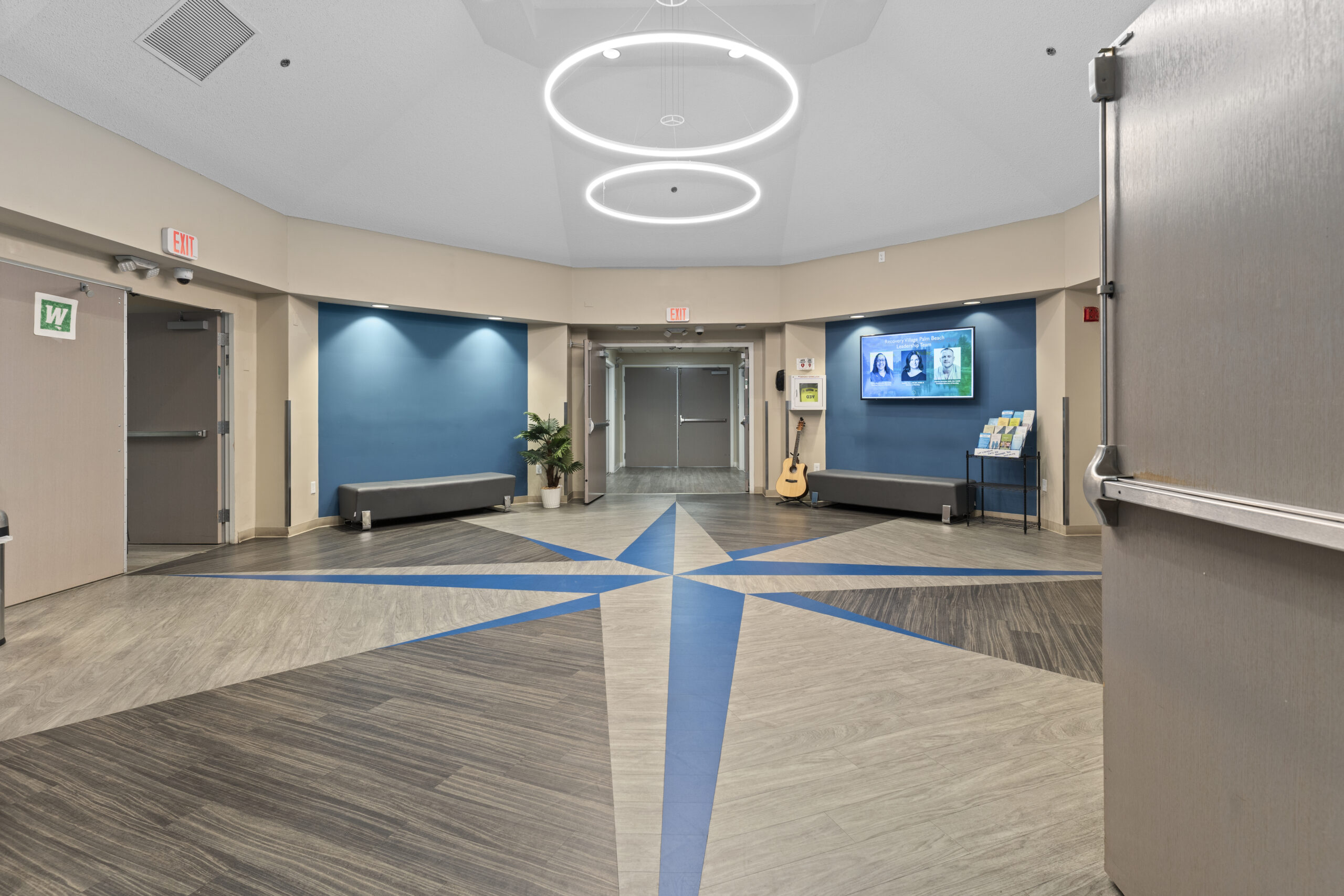Key Takeaway: Adjustment disorders are common, treatable mental health conditions that develop when someone has difficulty coping with a significant life change or stressor. With proper support and treatment—typically short-term therapy—most people recover completely within six months and develop better coping skills for future challenges.
What Are Adjustment Disorders?
Adjustment disorders are mental health conditions that occur when someone has an unusually difficult time adjusting to or coping with a significant life change or stressful event. The emotional and behavioral response is more intense than what would typically be expected and significantly interferes with daily functioning.
Unlike major depression or anxiety disorders, adjustment disorders are directly linked to an identifiable stressor and are generally temporary, usually resolving within six months once the person adapts to the change or the stressor is removed.
Key Characteristics of Adjustment Disorders
- Stress-related: Always triggered by an identifiable life change or stressor
- Disproportionate response: The reaction is more severe than expected for the situation
- Functional impairment: Symptoms significantly interfere with work, school, or relationships
- Time-limited: Usually resolves within 6 months (though chronic forms exist)
- Treatable: Responds well to therapy and support
Understanding the Diagnostic Criteria
DSM-5-TR Criteria for Adjustment Disorders
To receive a diagnosis of adjustment disorder, an individual must meet the following criteria:
- Stressor identification: Emotional or behavioral symptoms develop within 3 months of an identifiable stressor
- Clinical significance: Symptoms cause marked distress that exceeds what would be expected OR significant impairment in functioning
- Exclusion criteria: Symptoms don’t meet criteria for another mental health disorder and aren’t part of normal grief
- Duration: Symptoms don’t persist more than 6 months after the stressor ends (except in chronic cases)
Acute vs. Chronic Adjustment Disorders
Acute Adjustment Disorder:
- Symptoms last less than 6 months
- Occurs when the stressor is temporary
- Most common type
Chronic Adjustment Disorder:
- Symptoms persist for 6 months or longer
- Usually involves ongoing stressors (chronic illness, persistent financial problems)
- Requires extended treatment and support
Types of Adjustment Disorders
The DSM-5-TR recognizes six specific subtypes based on the predominant symptoms:
1. Adjustment Disorder with Depressed Mood (309.0)
Primary symptoms:
- Persistent sadness and tearfulness
- Feelings of hopelessness and despair
- Loss of interest in previously enjoyed activities
- Low energy and motivation
- Sleep and appetite changes
Example: A college student who becomes severely depressed after their parents divorce, unable to concentrate on studies or enjoy social activities.
2. Adjustment Disorder with Anxiety (309.24)
Primary symptoms:
- Excessive worry and nervousness
- Restlessness and irritability
- Difficulty concentrating
- Physical symptoms (rapid heartbeat, sweating)
- Separation anxiety (especially in children)
Example: An adult who develops severe anxiety after a job loss, constantly worrying about finances and experiencing panic attacks.
3. Adjustment Disorder with Mixed Anxiety and Depressed Mood (309.28)
Primary symptoms:
- Combination of depression and anxiety symptoms
- Mood swings between sadness and worry
- Both emotional numbness and excessive fear
- Sleep disturbances and concentration problems
Example: Someone who experiences both depression and anxiety after a major move to a new city, feeling both sad about leaving and anxious about the future.
4. Adjustment Disorder with Disturbance of Conduct (309.3)
Primary symptoms:
- Behavioral problems and acting out
- Violation of social norms or rules
- Aggressive or destructive behavior
- Reckless or impulsive actions
- More common in children and adolescents
Example: A teenager who begins skipping school, fighting, and destroying property after their parents separate.
5. Adjustment Disorder with Mixed Disturbance of Emotions and Conduct (309.4)
Primary symptoms:
- Combination of emotional symptoms (anxiety/depression) and behavioral problems
- Both internal distress and external acting out
- Complex presentation requiring comprehensive treatment
Example: A child who becomes both withdrawn/sad and begins having behavioral outbursts at school following a family trauma.
6. Adjustment Disorder Unspecified (309.9)
Primary symptoms:
- Reactions that don’t fit other categories
- May include physical symptoms
- Social withdrawal without clear anxiety or depression
- Unusual or atypical responses to stress
Example: Someone who develops chronic headaches and social isolation after a medical diagnosis but doesn’t show clear signs of anxiety or depression.
Common Stressors and Triggers
Life Transitions and Changes
Major life events:
- Marriage, divorce, or relationship changes
- Birth of a child or becoming a parent
- Job changes, promotion, or retirement
- Moving to a new home or city
- Starting or finishing school
Family and relationship stressors:
- Death of a loved one (complicated grief)
- Family conflict or dysfunction
- Separation from spouse or partner
- Changes in family structure
- Caregiving responsibilities
Health and Medical Stressors
Personal health challenges:
- Diagnosis of chronic illness
- Major surgery or medical procedures
- Disability or injury
- Fertility problems or pregnancy loss
- Mental health diagnoses in family members
Financial and Economic Stressors
- Job loss or unemployment
- Financial hardship or bankruptcy
- Business failure
- Unexpected major expenses
- Economic uncertainty
Social and Environmental Stressors
Social challenges:
- Bullying or harassment
- Discrimination or prejudice
- Social isolation or rejection
- Cultural adjustment (immigration)
- Community violence or crime
Environmental factors:
- Natural disasters
- Technological disasters
- War or political upheaval
- Neighborhood changes
Symptoms Across Different Age Groups
Children and Adolescents
Emotional symptoms:
- Frequent crying or sadness
- Excessive worry about separation
- Irritability and mood swings
- Feelings of hopelessness
- Loss of interest in play or activities
Behavioral symptoms:
- Regression in development (bedwetting, baby talk)
- School refusal or academic decline
- Changes in eating or sleeping patterns
- Aggressive or defiant behavior
- Social withdrawal from peers
Physical symptoms:
- Headaches or stomachaches
- Changes in appetite
- Sleep disturbances
- Fatigue or restlessness
Adults
Emotional symptoms:
- Persistent sadness or anxiety
- Feeling overwhelmed or helpless
- Irritability and mood instability
- Loss of motivation
- Difficulty experiencing pleasure
Behavioral symptoms:
- Avoiding responsibilities or activities
- Changes in work performance
- Relationship difficulties
- Substance use as coping mechanism
- Social isolation
Cognitive symptoms:
- Difficulty concentrating or making decisions
- Memory problems
- Negative thinking patterns
- Intrusive thoughts about the stressor
Older Adults
Unique considerations:
- Multiple concurrent stressors (health, loss of independence)
- Complicated by physical health conditions
- May present as physical complaints
- Higher risk of social isolation
- Grief and loss issues
Risk Factors and Protective Factors
Risk Factors for Developing Adjustment Disorders
Individual factors:
- Previous mental health history
- Personality traits (high stress sensitivity, low resilience)
- Poor coping skills
- Low self-esteem
- History of trauma or adverse childhood experiences
Social factors:
- Limited social support network
- Family dysfunction or conflict
- Economic disadvantage
- Cultural or language barriers
- Social isolation
Situational factors:
- Multiple concurrent stressors
- Severity and duration of the stressor
- Unpredictability of the stressor
- Lack of control over the situation
Protective Factors
Personal strengths:
- Good problem-solving skills
- Emotional intelligence
- Previous successful coping experiences
- Optimistic outlook
- Flexible thinking patterns
Social resources:
- Strong family relationships
- Supportive friendships
- Community connections
- Religious or spiritual community
- Access to professional help
Environmental factors:
- Financial stability
- Job security
- Safe living environment
- Access to healthcare
- Educational opportunities
Comprehensive Treatment Approaches
Psychotherapy: The Primary Treatment
Cognitive Behavioral Therapy (CBT)
Treatment focus:
- Identifying negative thought patterns related to the stressor
- Developing healthy coping strategies
- Problem-solving skill development
- Stress management techniques
- Gradual exposure to avoided situations
Typical duration: 6-20 sessions over 3-6 months Effectiveness: 70-80% success rate in symptom reduction
Other Effective Therapy Approaches:
Solution-Focused Brief Therapy (SFBT):
- Focuses on finding solutions rather than dwelling on problems
- Emphasizes strengths and resources
- Shorter treatment duration (6-10 sessions)
Interpersonal Therapy (IPT):
- Addresses relationship and social functioning
- Particularly helpful for adjustment disorders related to relationship changes
- Focuses on communication and social skills
Family Therapy:
- Essential when family relationships are affected
- Helps family members understand and support recovery
- Addresses family communication patterns
Group Therapy and Support
Benefits of group therapy:
- Peer support and shared experiences
- Reduced isolation and stigma
- Learning from others’ coping strategies
- Cost-effective treatment option
Types of support groups:
- Condition-specific groups (divorce, job loss, medical diagnosis)
- General adjustment and coping groups
- Online support communities
- Peer-led support groups
Medication Considerations
When medication might be helpful:
- Severe depression or anxiety symptoms
- Sleep disturbances significantly affecting functioning
- Physical symptoms interfering with daily life
- When therapy alone isn’t providing sufficient relief
Common medications:
Antidepressants (First-line):
- SSRIs: Sertraline (Zoloft), Fluoxetine (Prozac), Escitalopram (Lexapro)
- SNRIs: Venlafaxine (Effexor), Duloxetine (Cymbalta)
- Typically prescribed for 6-12 months
Anti-anxiety medications (Short-term use):
- Benzodiazepines: Only for severe acute anxiety
- Buspirone: For generalized anxiety symptoms
- Beta-blockers: For physical anxiety symptoms
Sleep aids (As needed):
- Trazodone for sleep and mood
- Short-term use of sleep medications
- Sleep hygiene education
Important considerations:
- Medications are typically used as adjuncts to therapy
- Regular monitoring for effectiveness and side effects
- Gradual tapering when discontinuing
- Avoid long-term benzodiazepine use
Self-Help and Coping Strategies
Immediate Coping Techniques
Stress management:
- Deep breathing exercises (box breathing: 4-4-4-4 count)
- Progressive muscle relaxation
- Mindfulness meditation (10-15 minutes daily)
- Grounding techniques (5-4-3-2-1 sensory method)
Emotional regulation:
- Journaling thoughts and feelings
- Expressing emotions through art or music
- Talking to trusted friends or family
- Practicing self-compassion
Behavioral activation:
- Maintaining daily routines
- Engaging in pleasant activities
- Setting small, achievable goals
- Staying physically active
Building Long-term Resilience
Developing coping skills:
- Problem-solving strategy development
- Cognitive reframing techniques
- Assertiveness training
- Time management skills
Lifestyle modifications:
- Regular exercise (30 minutes, 5 days per week)
- Healthy sleep habits (7-9 hours nightly)
- Balanced nutrition
- Limiting alcohol and avoiding drugs
Social connection:
- Strengthening existing relationships
- Building new social connections
- Participating in community activities
- Volunteering or helping others
Workplace and Academic Support
Workplace accommodations:
- Flexible scheduling during acute phases
- Reduced workload temporarily
- Access to Employee Assistance Programs (EAP)
- Stress management resources
Academic accommodations:
- Extended deadlines for assignments
- Reduced course load
- Access to counseling services
- Disability support services
Recovery Timeline and Prognosis
Typical Recovery Patterns
Weeks 1-4: Initial Phase
- Assessment and treatment planning
- Symptom stabilization
- Beginning of coping skill development
- Psychoeducation about adjustment disorders
Weeks 4-12: Active Treatment Phase
- Regular therapy sessions
- Skill practice and implementation
- Gradual improvement in functioning
- Medication adjustment if needed
Months 3-6: Consolidation Phase
- Continued symptom improvement
- Return to normal functioning
- Relapse prevention planning
- Therapy session spacing
Factors Affecting Recovery
Positive predictors:
- Early intervention and treatment
- Strong social support
- Good previous coping abilities
- Resolution of the triggering stressor
- Engagement in treatment
Challenging factors:
- Multiple concurrent stressors
- History of mental health problems
- Limited social support
- Ongoing or worsening stressors
- Substance use as coping
Long-term Outcomes
Complete recovery: 70-80% of people with adjustment disorders Partial recovery: 15-20% may have lingering symptoms Progression to other disorders: 5-10% may develop major depression or anxiety disorders
Prevention and Early Intervention
Building Resilience Before Stressors Occur
Individual strategies:
- Developing emotional intelligence
- Learning stress management techniques
- Building problem-solving skills
- Maintaining physical health
- Cultivating optimism and flexibility
Social strategies:
- Building strong relationships
- Participating in community activities
- Developing support networks
- Learning communication skills
Environmental strategies:
- Creating stable living situations
- Building financial security
- Developing career skills
- Planning for potential stressors
Early Warning Signs
Recognize these symptoms early:
- Persistent worry about upcoming changes
- Sleep disturbances when facing stress
- Appetite changes during difficult times
- Increased irritability or mood swings
- Avoiding responsibilities or activities
- Increased substance use during stress
When to Seek Professional Help
Immediate professional help needed:
- Thoughts of suicide or self-harm
- Severe impairment in daily functioning
- Substance abuse as coping mechanism
- Symptoms persisting beyond 2-3 weeks
- Multiple areas of life significantly affected
Types of professionals who can help:
- Licensed Clinical Social Workers (LCSW)
- Licensed Professional Counselors (LPC)
- Psychologists (PhD, PsyD)
- Psychiatrists (MD)
- Marriage and Family Therapists (MFT)
Special Populations and Cultural Considerations
Children and Adolescents
Unique treatment considerations:
- Family involvement essential
- School-based interventions
- Age-appropriate therapy techniques
- Developmental considerations in treatment planning
Common childhood stressors:
- Parental divorce or separation
- School transitions
- Bullying or peer problems
- Family illness or death
- Academic pressures
Cultural and Ethnic Considerations
Culturally responsive treatment:
- Understanding cultural expressions of distress
- Incorporating cultural values and beliefs
- Addressing language barriers
- Working with cultural healers or religious leaders
- Recognizing cultural stigma around mental health
Special populations:
- Immigrants and refugees
- Military families
- LGBTQ+ individuals
- Indigenous communities
- Elderly populations
Adjustment Disorders vs. Other Mental Health Conditions
Key Differences from Similar Conditions
Adjustment Disorder vs. Major Depressive Disorder:
- Trigger: AD always has an identifiable stressor; MDD may not
- Duration: AD typically resolves within 6 months; MDD often persists longer
- Severity: MDD generally has more severe, persistent symptoms
- Response: AD responds well to brief therapy; MDD may require longer treatment
Adjustment Disorder vs. PTSD:
- Stressor type: AD involves non-traumatic stressors; PTSD requires trauma exposure
- Symptoms: PTSD includes specific trauma symptoms (flashbacks, nightmares)
- Duration: AD is time-limited; PTSD can be chronic without treatment
- Treatment: Different therapeutic approaches for each condition
Adjustment Disorder vs. Generalized Anxiety Disorder:
- Focus: AD anxiety relates to specific stressor; GAD involves general worry
- Timeline: AD has clear onset after stressor; GAD may have gradual onset
- Scope: AD affects specific life areas; GAD affects multiple areas
- Prognosis: AD typically resolves faster than GAD
Comorbidity Considerations
Common co-occurring conditions:
- Substance use disorders (25-75% of cases)
- Major depressive disorder
- Anxiety disorders
- Sleep disorders
- Somatic symptom disorders
Research and Future Directions
Current Research Areas
Neurobiological studies:
- Brain imaging research on stress response
- Genetic factors in stress vulnerability
- Biomarkers for early identification
- Neurofeedback as treatment option
Treatment innovations:
- Technology-assisted therapy (apps, online programs)
- Virtual reality exposure therapy
- Personalized medicine approaches
- Community-based interventions
Prevention research:
- Resilience training programs
- Early identification tools
- School-based prevention programs
- Workplace mental health initiatives
Emerging Treatment Approaches
Digital therapeutics:
- Smartphone apps for stress management
- Online therapy platforms
- Virtual support groups
- AI-assisted monitoring and intervention
Integrative approaches:
- Mindfulness-based interventions
- Yoga and movement therapy
- Art and music therapy
- Nature-based therapies
Living with Adjustment Disorders: Practical Guide
Daily Management Strategies
Morning routine:
- Consistent wake time
- Mindfulness or meditation practice
- Physical activity or stretching
- Healthy breakfast
- Setting daily intentions
During stressful moments:
- Use grounding techniques
- Practice deep breathing
- Take breaks when needed
- Reach out for support
- Use positive self-talk
Evening routine:
- Reflect on the day’s successes
- Practice gratitude
- Limit screen time
- Relaxation activities
- Consistent bedtime
Building Support Systems
Family and friends:
- Educate loved ones about adjustment disorders
- Communicate needs clearly
- Accept help when offered
- Maintain social connections
- Set healthy boundaries
Professional support:
- Regular therapy appointments
- Medication management if needed
- Medical care coordination
- Workplace accommodations
- Educational support services
Community resources:
- Support groups
- Religious or spiritual communities
- Volunteer opportunities
- Recreational activities
- Mental health organizations
Impact on Relationships and Family
Effects on Family Dynamics
Common relationship impacts:
- Communication difficulties
- Increased family stress
- Role changes within family
- Emotional distance or conflict
- Caregiver burden
Supporting family members:
- Family therapy or counseling
- Education about adjustment disorders
- Stress management for family
- Respite care when needed
- Family support groups
Maintaining Relationships During Recovery
Communication strategies:
- Open, honest dialogue about needs
- Regular check-ins with loved ones
- Setting realistic expectations
- Expressing gratitude for support
- Working through conflicts constructively
Rebuilding trust and connection:
- Consistent follow-through on commitments
- Participating in shared activities
- Showing appreciation for patience
- Working toward shared goals
- Creating new positive experiences
Financial and Legal Considerations
Insurance Coverage
Mental health parity:
- Equal coverage for mental health and medical conditions
- Coverage for therapy and medication
- In-network vs. out-of-network providers
- Prior authorization requirements
Types of coverage:
- Individual therapy sessions
- Group therapy
- Psychiatric medication
- Intensive outpatient programs
- Emergency mental health services
Workplace Rights and Protections
Americans with Disabilities Act (ADA):
- Reasonable accommodations for mental health conditions
- Protection from discrimination
- Interactive process for accommodation requests
- Documentation requirements
Family and Medical Leave Act (FMLA):
- Unpaid leave for mental health treatment
- Job protection during leave
- Eligibility requirements
- Documentation from healthcare providers
Crisis Management and Safety Planning
Recognizing Crisis Situations
Warning signs of crisis:
- Thoughts of suicide or self-harm
- Severe depression or hopelessness
- Panic attacks or severe anxiety
- Inability to care for basic needs
- Substance abuse escalation
- Psychotic symptoms or severe dissociation
Safety Planning Components
Personal safety plan should include:
- Warning signs recognition
- Coping strategies that work
- Support person contact information
- Professional emergency contacts
- Crisis hotline numbers
- Safe environment modifications
Crisis resources:
- 988 Suicide & Crisis Lifeline: Call or text 988
- Crisis Text Line: Text HOME to 741741
- National Alliance on Mental Illness: 1-800-950-NAMI (6264)
- Local emergency services: 911
- Hospital emergency departments
Success Stories and Hope
Recovery Examples
Case Example 1: A college student experiencing adjustment disorder after parents’ divorce successfully completed therapy in 3 months, developed better coping skills, and maintained good academic performance.
Case Example 2: A middle-aged professional with adjustment disorder following job loss engaged in cognitive behavioral therapy, found new employment, and reported improved stress management abilities.
Case Example 3: A teenager with adjustment disorder related to family relocation participated in family therapy, developed new friendships, and showed significant improvement in mood and behavior.
Building Hope and Motivation
Recovery principles:
- Adjustment disorders are highly treatable
- Most people recover completely
- Seeking help is a sign of strength
- Support is available and effective
- Skills learned benefit future challenges
Conclusion and Key Takeaways
Adjustment disorders are among the most common and treatable mental health conditions, affecting millions of people who face significant life changes or stressors. The key to successful recovery lies in:
Early recognition and intervention:
- Identifying symptoms within the first few weeks
- Seeking professional help promptly
- Engaging actively in treatment
- Building strong support systems
Effective treatment approaches:
- Evidence-based psychotherapy (especially CBT)
- Short-term medication when helpful
- Family and social support
- Lifestyle modifications and self-care
Long-term resilience building:
- Developing healthy coping strategies
- Maintaining social connections
- Practicing stress management
- Building problem-solving skills
Hope and recovery:
- 70-80% of people recover completely
- Skills learned benefit future challenges
- Treatment is typically brief and effective
- Support is widely available
Remember that experiencing difficulty adjusting to life changes is normal, and seeking help when that difficulty becomes overwhelming is a positive step toward recovery. With proper support and treatment, people with adjustment disorders not only recover but often develop stronger coping skills and resilience for future challenges.
Additional Resources
Professional organizations:
- American Psychological Association: apa.org
- National Association of Social Workers: nasw.org
- American Psychiatric Association: psychiatry.org
Mental health resources:
- National Institute of Mental Health: nimh.nih.gov
- Mental Health America: mhanational.org
- National Alliance on Mental Illness: nami.org
Crisis and support:
- 988 Suicide & Crisis Lifeline: Call or text 988
- Crisis Text Line: Text HOME to 741741
- SAMHSA National Helpline: 1-800-662-4357
This information is for educational purposes only and should not replace professional medical advice. Always consult with a qualified mental health professional for proper diagnosis and treatment.






